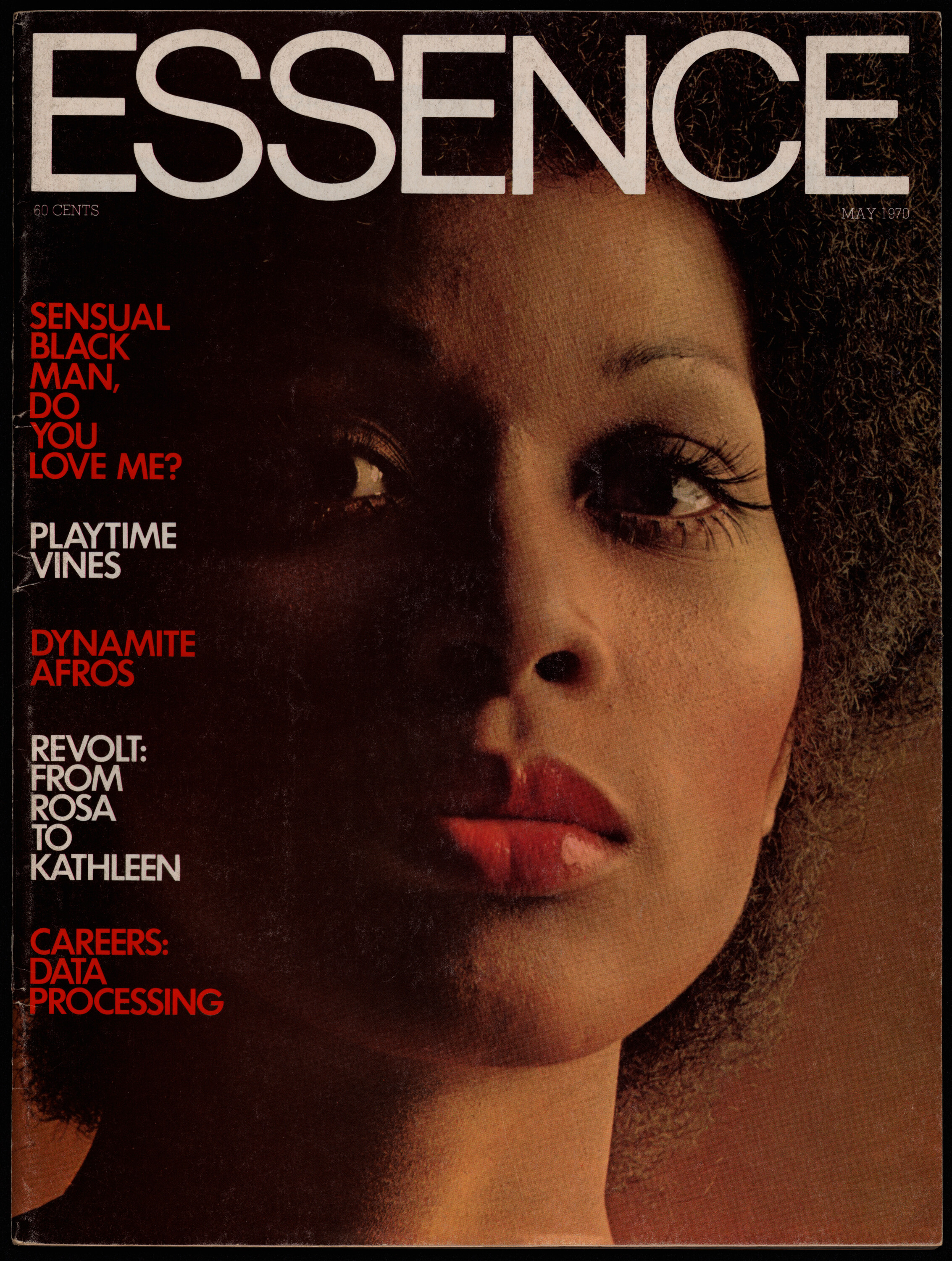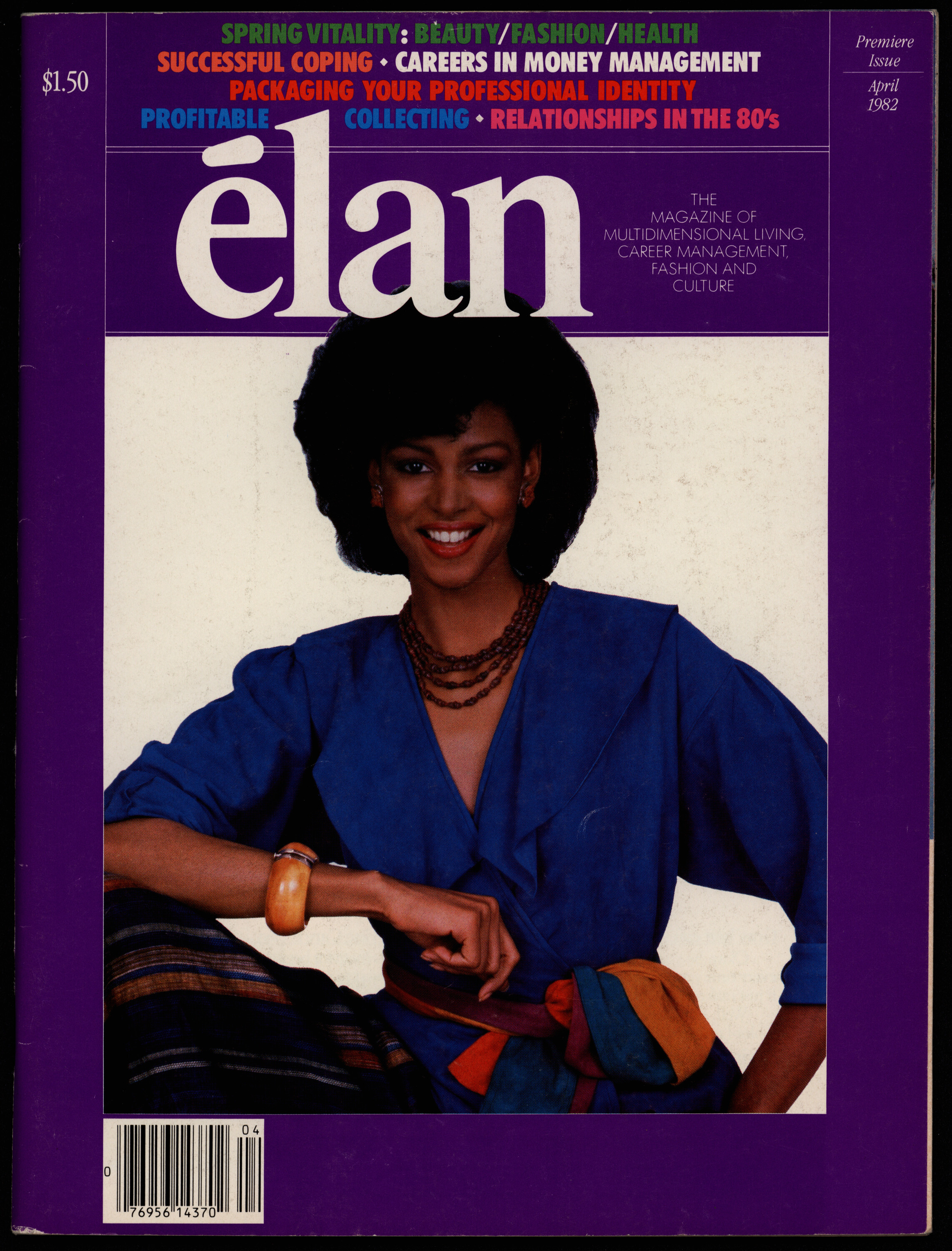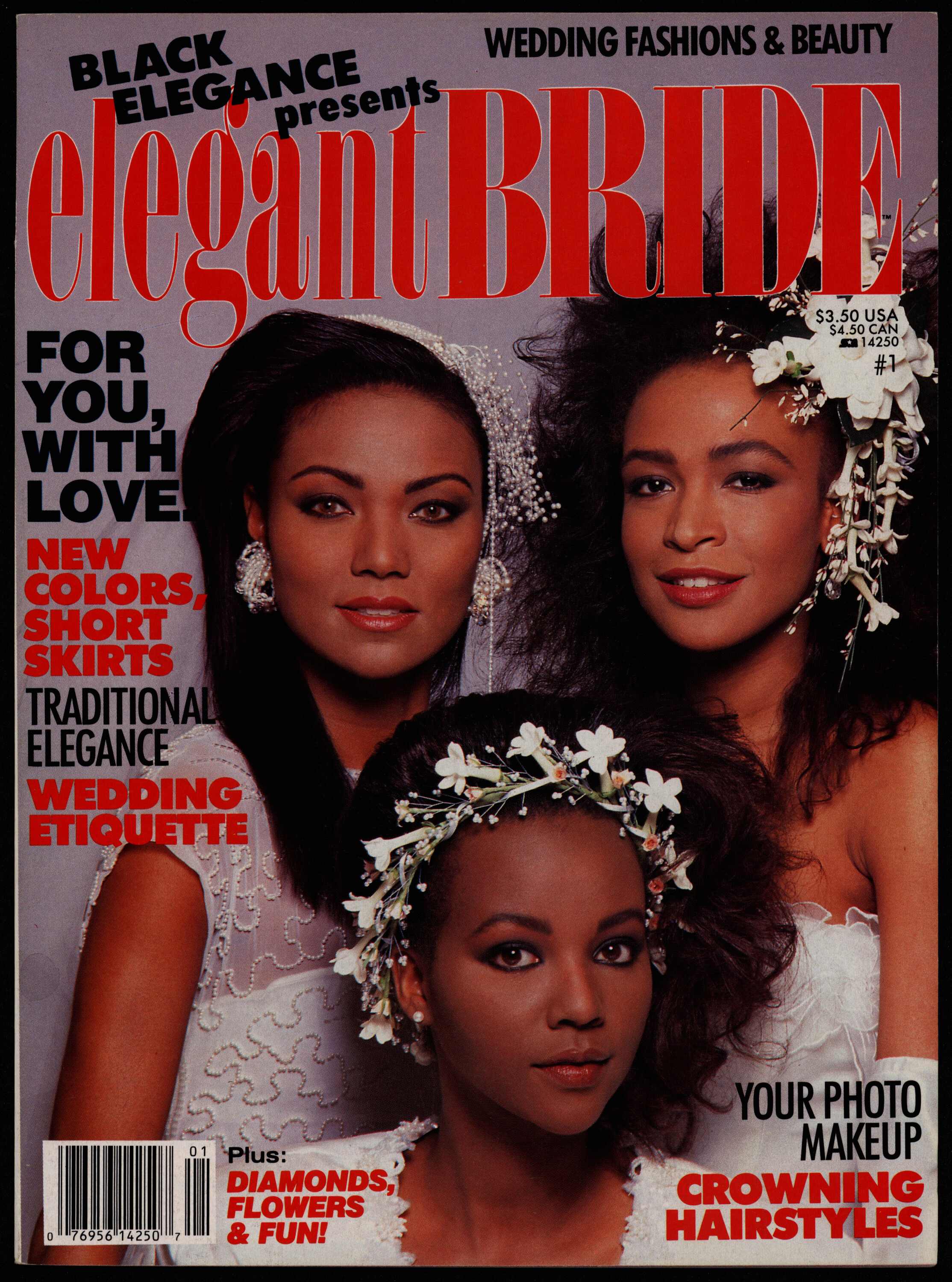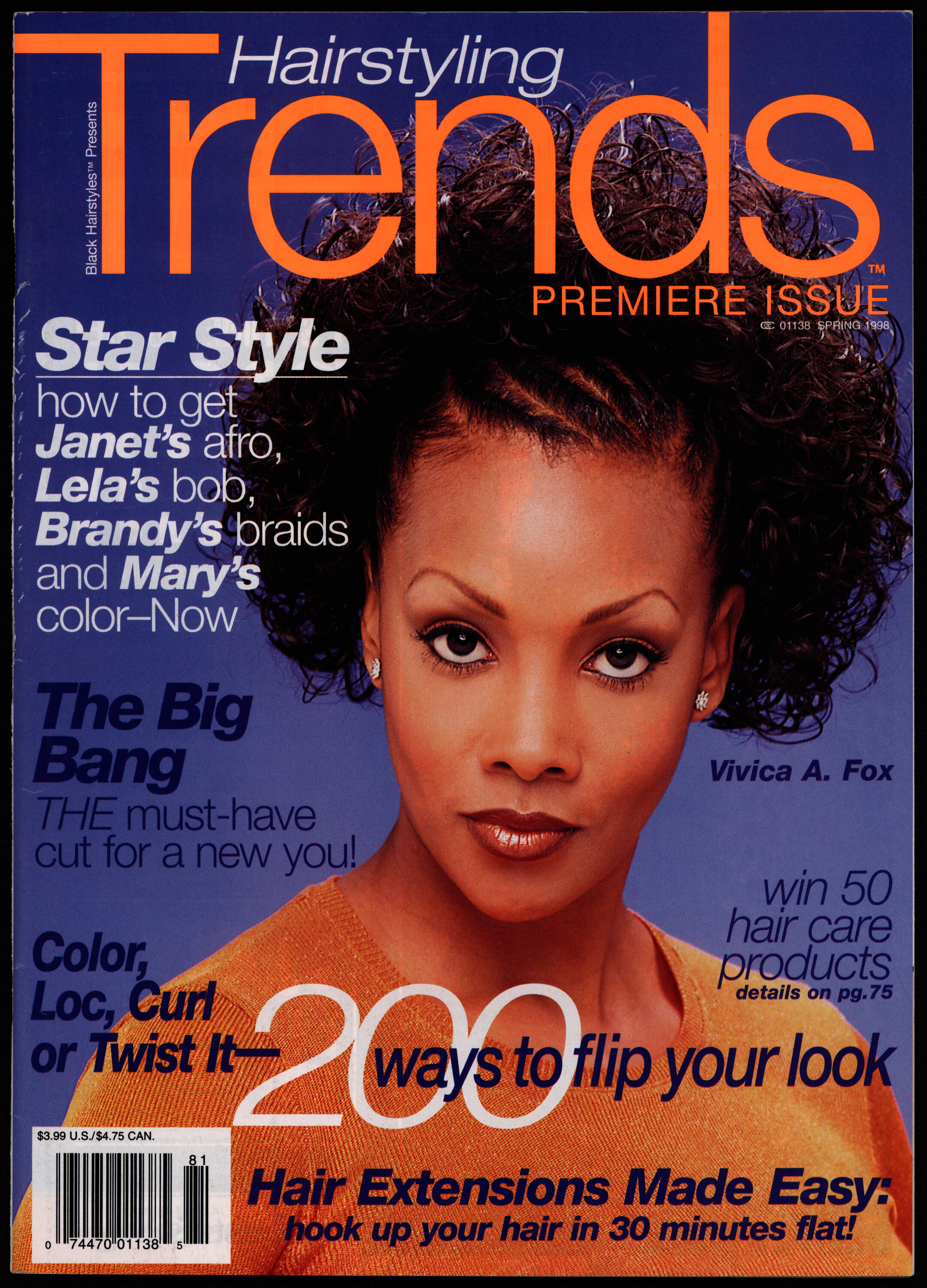Life in America: Sixteen Black Magazines from 1953 to 1998
Beauty and Fashion Magazines
A cultural dimension of the Black Power movement of the 1960s and 1970s was the slogan that “Black is Beautiful.” The slogan and its associated movement arose out of resistance to racist ideals of beauty that focused on whiteness. By contrast, Black is Beautiful emphasized the aesthetic value of Black bodies. Taken together with the demonstrated success of magazines like Ebony and Jet, which focused on Black consumers, it seems inevitable that we would see new magazines on Black beauty and Black fashions arise at this time. These magazines’ engagement with explicit questions of Black empowerment would vary, but especially in the beginning, the very act of thematizing Black beauty was a political act. A magazine that held up Black hair and fashion as ideals, or featured Black models could easily be seen as radical.
Included in this gallery is the early Black women’s magazine Essence as well as three smaller magazines from the following decades. Like all Black magazines, these magazines had to balance political concerns with economic ones: they were businesses aiming to sell a product and so explicit politicization was risky. The concerns of the Black is Beautiful movement are still with us today, as shown by the recent lawsuits related to freedom of expression through natural Black hair.
Essence Vol. 1, No. 1 (1970)
Essence was the brainchild of Jonathon Blount, a young black salesman. At the time, most of the profitable Black magazines were being produced by activist social organizations, with religious denominations and academics producing smaller magazines. Blount saw an opening for a magazine aimed specifically at Black women, and in 1970 he joined forces with another salesman, Cecil Hollingsworth, as well as the financial planner Edward Lewis and the printing expert Cyril Hill to produce Essence, with the photographer Gordon Parks as their editorial director. They were ambitious, as the initial press run of 175,000 copies indicated, and their ambition was rewarded with success. Like Ebony, while not opposed to Black nationalism per se, the magazine was intended to be “more woman and less black,” with an early editorial declaring “We do not intend to go through the ‘Mirror-mirror-on-the-wall-who-is-the-blackest-of-them-all?’ syndrome. … We are convinced that we can best serve the Black woman by encouraging her to fulfill herself.”
This first issue of the magazine features images of fashion worn by Black models, ads for hair products (especially for the Afro hairstyle), and articles on Black music, but also long articles on Black manhood (especially the romantic ideal that modern Black men were expected to live up to, as well as an examination of interracial dating), different degrees of militant behavior, and the integration of the universities.
The magazine is still in circulation today, although it has changed ownership a few times, including a period when it was owned by Time Inc.
Élan Vol. 1, No. 1 (1982)
Élan was a black women’s magazine founded by Cecile D. Barker and Jonathan Blount, who had previously co-founded Essence. The magazine focused on women who in the 25 to 54 age range with more emphasis on how to make money than makeup or matrimony. While the editorial staff was confident that the magazine would fill a niche for professional women whose needs were not being met by Ebony, the magazine got off to a rough start, being suspended after three issues and then falling by the wayside. Both its premiere and its hiatus (which turned permanent) were covered in the New York Times. (In 1983, the magazine was revived under the title of Élancée, though it did not last long, only until December 1984.)
This first issue of the magazine is clearly tailored for the older demographic: it features advice on choosing an investment broker, the pros and cons of sending children to summer camp, and funding college for one’s children (with a prediction that within a few years, college may cost $25,000 per year). Also included are more generic beauty articles and fashion topics, as well as a piece on “relationships in the 80s” that emphasizes the partnership and work required for a long-lasting relationship.
Black Elegance Presents Vol. 1, No. 1 (1987)
Black Elegance Presents is a kind of anthology magazine: each issue covers a different topic. The magazine’s parent publication was Black Elegance, also called BE, which was founded in 1986 and continued into the 21st century. This first issue of the magazine focuses on weddings with a subtitle of Elegant Bride; issue two would focus on Elegant Fashion. Weddings in the 20th century grew steadily more elaborate: whereas wedding receptions and wedding showers had not been unknown before World War II, after the 1960s and 1970s, they became standard expectations with ever more pageantry and ever more attendees. In the 1960s, there was an expectation that a wedding could be planned within three to six months, by 1973, at least one year was seen as necessary.
As might be expected, a large percentage of the magazine is taken up with photographs of wedding dresses and jewelry. Most of the dresses and suits are clearly heavily influenced by European and North American fashions, though there are a few based on African styles. Prices range from $198 to $3,200 ($591 to $9,564 in 2024 money). The magazine additionally provides a detailed checklist for planning a wedding (starting a year in advance), and advice on how a wedding ceremony may be adapted if either partner has previously been married.
In addition to the exclusive use of Black models in the magazine, it also includes an advertisement for a game called “Black Quest: The game with everything you thought you knew about Black America, and then some!” The trivia game is intended to teach teenagers about Black history and Black contributions to society.
Hairstyling Trends Vol. 1, No. 1 (1998)
As long as Black people have been in the United States, hair and hairstyles have played into their social status: slaves with straight hair were sometimes afforded places of privilege. In the 1960s and 1970s, however, Black hairstyles that emphasized natural looks and African heritage came to the forefront, and hairstyles became increasingly politicized. While the intense politicization faded after the initial culture shock and Afrocentric hairstyles like the Afro eventually found their way into the larger society, Black hair remains an intense point of political and social debate, with some employers’ and schools’ attempts to police it resulting in high-profile lawsuits.
This first issue of Hairstyling Trends, a magazine that debuted in spring 1998, focuses almost exclusively on Black hair despite its general name. (An alternate title for the magazine, visible only on the inside cover with the publication information, was Black Hairstyles.) It offers advice on emulating the hairstyles of a list of 1990s celebrities, mainly singers: Brandy, Mary J. Blige, the singers of the band Brownstone, Janet Jackson, Lela Rochon, Iman, Rachel Stuart, the band Changing Faces, Aayliah, and Tyra Banks. Notably, the sixies-style Afro is nowhere to be seen, having been largely supplanted by braids, straightened hair, and weaves.



